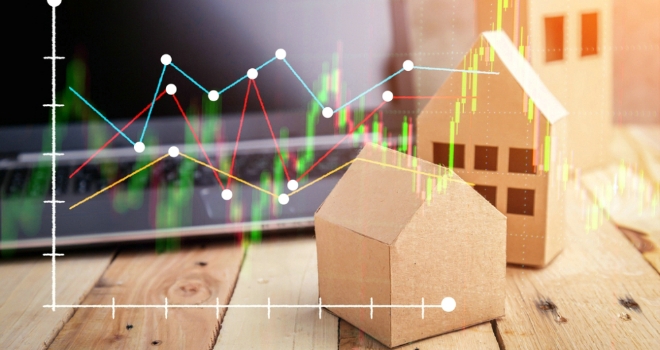All regions of the UK saw an increase in house prices during Q2 as the growth rate peaked above 13% in June, the highest level since November 2004, according to the latest figures released this morning by Nationwide.
According to the data, after taking account of seasonal factors, average house prices across the UK were up 0.7% month-on-month, with Northern Ireland seeing the strongest growth during the quarter. Scotland was the weakest performing region, closely followed by London.
Robert Gardner, Nationwide’s Chief Economist, comments on this morning’s figures: “Annual house price growth accelerated to 13.4% in June, the highest outturn since November 2004. While the strength is partly due to base effects, with June last year unusually weak due to the first lockdown, the market continues to show significant momentum. Indeed, June saw the third consecutive month-on-month rise (0.7%), after taking account of seasonal effects. Prices in June were almost 5% higher than in March.
“Regional data for the three months to June indicates that all parts of the UK saw an acceleration in annual house price growth. Northern Ireland and Wales saw the largest gains, at 14% and 13.4% respectively in Q2. By contrast, Scotland saw the weakest rate of annual growth, at 7.1% closely followed by London at 7.3%.
All regions saw a rise in house price growth during Q2
Robert Gardener continues: “There was a considerable pick up in overall UK annual house price growth in Q2 and all regions saw an increase in their annual growth rate.
“Northern Ireland was the strongest performing region, with prices up 14% year-on-year, the highest rate of growth since 2007. Wales also saw a significant acceleration in annual house price growth to 13.4%, the largest rise since 2005.
“But conditions were more muted in Scotland, which saw a modest increase in annual growth to 7.1% (from 6.9% last quarter) and was also the weakest performing part of the UK. This may reflect that the stamp duty (LBTT) holiday in Scotland ended on 31 March.
“England saw annual house price growth increase to 9.9%, from 6.4% in the first quarter of the year. Within England, Yorkshire & Humberside was the strongest performing region, with prices up 13.0% year on year. This is the strongest price growth seen in the region since 2005 and pushed average prices to a record high of £183,982.
“Both the East and West Midlands saw annual price growth rise to 12.2% in Q2. Meanwhile in the North, prices were up 11.2% year-on-year
“London was the weakest performing English region, though still saw a pickup in annual price growth to 7.3%, from 4.8% last quarter. The surrounding Outer Metropolitan region, which includes places such as Luton, Watford, Sevenoaks and Woking, saw annual price growth rise to 8.2%.
“Meanwhile, house price growth in the Outer South East region, which includes cities such as Brighton & Hove, Oxford, Winchester and Southampton, increased to 10.9%, the first time the region has seen double-digit growth since 2014.
“And in the South West region, annual house price growth reached its highest level since 2010, with prices up 10.4% year-on-year.”
Mike Scott, Chief Analyst at estate agency Yopa, adds: “The Nationwide House Price Index for June is showing a further acceleration in house price growth, with the annual rate of increase now at 13.4%, the highest in nearly twenty years. This cannot just be due to the stamp duty holiday, since prices are still growing (albeit more slowly) in Scotland where the holiday ended in March. Furthermore, even in the rest of the country the prices in this report are based on mortgage approvals in June, which are unlikely to have led to a completed purchase before the 30 June deadline for the main part of the stamp duty holiday.
“It’s clear that the momentum of the housing market is still building as we move towards the end of lockdown. While there will undoubtedly be a slowdown in the rate of activity after tomorrow’s stamp duty deadline, we don’t expect this to lead to any price falls. Prices are likely to keep rising for at least the remainder of 2021 as supply is still very limited and people are looking to move on with their lives after the pandemic, which for many will mean moving house.”
Sundeep Patel, Director of Sales at Together, commented: “Another month of strong growth for house prices goes to show just how competitive the race for space has become, with buyers still eager to snap up properties at pandemic prices, ahead of the first taper for the Stamp Duty holiday extension ending this week. Today’s figures show house prices were up by 0.7% month-on-month and annual house prices rose by a staggering 13.4% – the highest level recorded since November 2004.
“That said, from the second half of the year onwards, we are expecting to see things start to slow down as potential buyers adapt to this next phase of the pandemic, without Government support and tax breaks. Whatever property financing is needed in the future, lenders who can offer a degree of flexibility are going to be highly sought after, as people look to pursue property plans against their changing needs in the market.”
Credit: Source link









